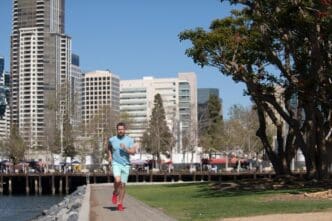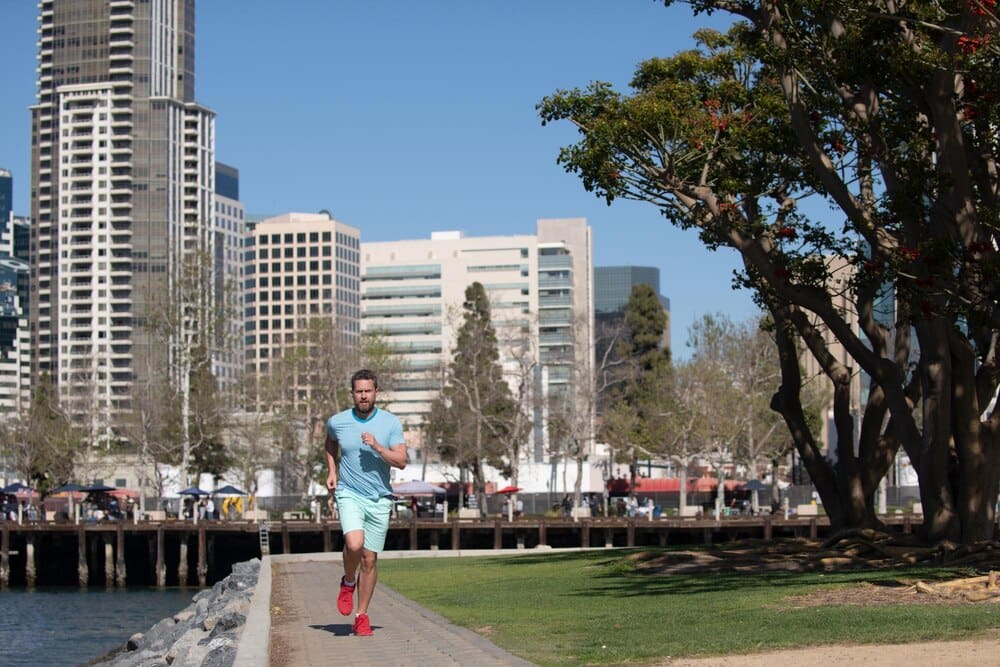A Quick Takeaway
The Story Behind the Trend
How to Make It Work for You
The Community View
For runners in Orlando seeking to elevate their training and performance, mastering your running watch’s navigation capabilities is a game-changer, transforming routine jogs into optimized, goal-oriented expeditions. This advanced skill allows athletes of all levels to precisely follow pre-planned routes, explore new terrains with confidence, and maintain optimal pacing and effort, ultimately leading to more efficient workouts and a deeper understanding of their running environment. By leveraging your watch’s GPS, mapping, and guidance features, you can unlock new levels of performance, whether you’re tackling the urban landscape of downtown Orlando or venturing onto the scenic trails of Central Florida.
Why Navigation Matters for Runners
Beyond simply tracking distance and pace, integrated navigation on your running watch offers a multitude of benefits that directly impact performance and enjoyment. It eliminates the mental fatigue of constantly checking your phone or worrying about getting lost, allowing you to focus entirely on your form, effort, and surroundings. This freedom fosters a more mindful and effective running experience.
Navigation also enables structured training, allowing you to design routes with specific elevation profiles, distances, or points of interest to target particular physiological adaptations. For instance, you can create a route that includes specific hill repeats or a sustained flat section for speed work, ensuring your training is always purposeful. Furthermore, it opens up the possibility of exploring new areas safely, broadening your running horizons and keeping your training fresh and engaging.
Choosing the Right Running Watch for Navigation
Not all running watches are created equal when it comes to navigation. When selecting a device, prioritize models known for superior GPS accuracy, which is crucial for precise route following, especially in areas with tree cover or tall buildings. Look for watches that support multiple satellite systems (GPS, GLONASS, Galileo) for enhanced reliability.
Battery life is another critical factor, particularly for longer runs or multi-day adventures where recharging isn’t an option. Watches with robust mapping capabilities, including pre-loaded topographic maps or the ability to download detailed maps, offer a richer navigational experience. Features like a barometric altimeter for accurate elevation data and a compass for orientation further enhance a watch’s navigational prowess.
Pre-Run Preparation: Mapping Your Orlando Routes
The key to effective navigation lies in meticulous pre-run preparation. Most modern running watches integrate with companion apps or web platforms where you can create, import, and manage routes. Platforms like Garmin Connect, Strava, and Komoot offer intuitive tools to draw custom routes on a map, specifying turn-by-turn directions and points of interest.
You can also import GPX (GPS Exchange Format) files, which are standard for sharing routes. Many popular running routes in Orlando, such as the West Orange Trail, Lake Eola loop, or the scenic paths around Lake Baldwin, have GPX files readily available online from other runners or event organizers. Importing these allows you to follow well-trodden paths without the guesswork.
Consider the specific demands of Orlando’s environment when planning. Account for areas with potential GPS signal interference, such as dense urban canyons downtown or heavily wooded sections of trails. Also, factor in the intense heat and humidity; planning routes with access to water fountains or shaded sections can be crucial for comfort and safety.
On the Run: Navigating Orlando’s Trails and Streets
Once your route is loaded, your watch becomes your personal guide. Most watches offer a “breadcrumb” trail display, showing your progress along a line on the screen, indicating your current position relative to the planned path. More advanced watches provide turn-by-turn directions, often with on-screen prompts or vibrations, ensuring you don’t miss a crucial turn.
Pay attention to the elevation profile feature, which helps you anticipate climbs and descents, allowing you to manage your effort more effectively. This is particularly useful on routes like parts of the Lake Nona area, which can have subtle undulations. Some watches also allow you to mark and navigate to custom Points of Interest (POIs), such as water stops, restrooms, or scenic overlooks.
Even with careful planning, unexpected detours can occur. Your watch’s navigation features can help you adapt. Many devices offer a “back to start” or “track back” function, guiding you along the route you’ve already covered if you need to return or if you’ve veered off course. Familiarize yourself with these recovery features before you head out.
Post-Run Analysis and Optimization
The utility of your running watch extends beyond the run itself. After completing your route, upload your activity to your preferred platform for detailed analysis. Review your actual path against your planned route, noting any deviations or areas where GPS accuracy might have been challenged. This feedback helps refine future route planning.
Analyze your pace and effort across different segments of the route, especially those with varying terrain or elevation. This data can inform future training strategies, helping you understand how different environments impact your performance. Sharing your successful routes with friends or the running community can also inspire others and foster a sense of shared adventure.
Orlando-Specific Navigation Considerations
Running in Orlando presents unique challenges and opportunities for navigation. The city’s blend of urban environments, expansive parks, and major theme park areas means GPS signal can fluctuate. Downtown Orlando’s high-rises can sometimes obscure satellite signals, leading to slight inaccuracies. Similarly, large structures within theme parks might occasionally interfere with precise tracking, though most modern watches are designed to minimize this.
The intense Florida heat and humidity are significant factors. Navigation features, especially those with detailed mapping and constant screen updates, can consume battery life more quickly. Ensure your watch is fully charged and consider enabling power-saving modes for longer runs. Hydration reminders, if available on your watch, become invaluable in this climate, prompting you to drink water at regular intervals.
Orlando boasts fantastic running locations where navigation shines. The West Orange Trail offers miles of paved, scenic paths, perfect for long runs where following a pre-planned route ensures you hit your desired distance. Lake Eola Park’s loop is ideal for repeated intervals, and navigation can help track precise laps. Even within the sprawling resorts, creating and following custom routes can make exploring on foot an organized and enjoyable experience.
Advanced Navigation Techniques
For the truly dedicated, some watches offer advanced navigation features. “Course deviation alerts” notify you immediately if you stray from your planned route, saving valuable time and preventing frustration. The “back to start” feature is a safety net, guiding you directly to your starting point even if you’re completely disoriented.
Certain high-end models can also integrate weather alerts, providing real-time updates on approaching storms or significant temperature changes, which is incredibly useful during Orlando’s unpredictable summer afternoons. Leveraging these advanced tools not only enhances your performance but also significantly improves your safety and confidence on any run.
Mastering your running watch’s navigation features is an investment in smarter, safer, and more enjoyable running, particularly in a diverse environment like Orlando. By diligently planning routes, understanding your watch’s capabilities, and analyzing your post-run data, you can transform every run into a purposeful step towards your peak performance, embracing all the beauty and challenge Central Florida has to offer.







